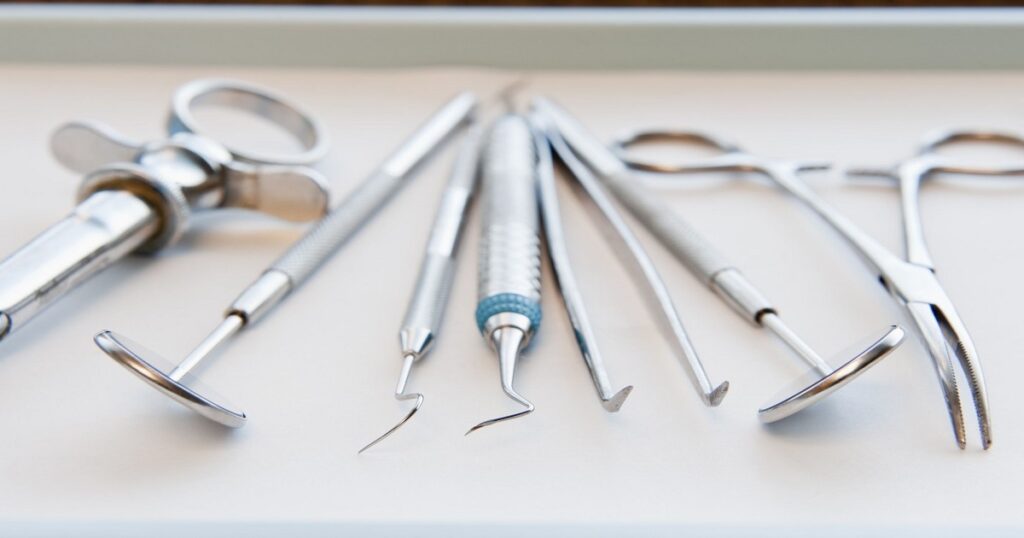The quality of materials used in dental instruments plays a pivotal role in the effectiveness, durability, and safety of dental procedures. Dental Instruments USA has set a global benchmark by consistently delivering precision-engineered tools crafted from premium materials. This article delves into the types of materials used, their unique properties, and how they contribute to the overall performance of dental instruments.
Importance of Material Quality in Dental Instruments
High-quality Dental Instruments USA are essential for ensuring patient safety, enhancing procedural efficiency, and maintaining hygiene standards. Materials used in these instruments determine critical factors such as:
- Durability
Instruments must endure frequent sterilization and prolonged use without losing functionality or integrity. - Corrosion Resistance
Dental tools are constantly exposed to moisture, sterilization chemicals, and bodily fluids, necessitating materials with robust anti-corrosion properties. - Precision and Performance
Superior materials allow for the creation of instruments with exceptional sharpness and accuracy, crucial for intricate dental procedures. - Biocompatibility
Materials should be non-toxic and hypoallergenic to ensure patient safety during use.
Materials Commonly Used in Dental Instruments
1. Stainless Steel
Stainless steel is one of the most widely used materials in the manufacture of dental instruments. Its popularity stems from the following properties:
- Corrosion Resistance
Stainless steel is highly resistant to rust, making it ideal for instruments exposed to moisture and sterilizing agents. - Strength and Durability
It provides the necessary toughness to endure repeated use and autoclaving without deforming. - Varieties
Different grades, such as austenitic, martensitic, and precipitation-hardening stainless steels, are selected based on specific instrument requirements.
Applications: Scalers, probes, forceps, and surgical instruments.
2. Titanium
Titanium has gained prominence in dental instrument manufacturing due to its superior qualities:
- Lightweight
Titanium is significantly lighter than stainless steel, reducing hand fatigue during long procedures. - Corrosion Resistance
It exhibits unparalleled resistance to oxidation and chemical wear, even in challenging environments. - Biocompatibility
Titanium is non-toxic and hypoallergenic, ensuring maximum safety for patients.
Applications: Implant tools, ultrasonic scaler tips, and microsurgical instruments.
3. Tungsten Carbide
Tungsten carbide is a robust material frequently used for cutting and grinding instruments:
- Extreme Hardness
Tungsten carbide is harder than most metals, allowing for precise cutting and shaping. - Edge Retention
Instruments made with tungsten carbide retain their sharp edges longer, reducing the need for frequent sharpening.
Applications: Burs, cutting blades, and drill bits.
4. High-Carbon Steel
High-carbon steel is favored for instruments requiring exceptional sharpness and rigidity:
- Sharpness
It maintains a razor-sharp edge, crucial for precision tools like scalers and curettes. - Affordability
While slightly less durable than stainless steel, it is cost-effective for disposable or single-use instruments.
Applications: Scalpels, scissors, and disposable instruments.
5. Plastic and Polymers
For certain applications, plastic and polymer materials offer unique advantages:
- Flexibility
Polymers provide the necessary flexibility for tools like impression trays. - Cost-Effectiveness
They are ideal for single-use instruments due to their affordability and lightweight nature.
Applications: Impression trays, syringes, and suction tips.
Material Testing and Certification
To maintain stringent quality standards, the company employs rigorous testing and certification processes. Key aspects include:
- Corrosion Testing
Instruments are exposed to simulated sterilization cycles to ensure corrosion resistance. - Hardness Testing
Materials undergo hardness tests to verify their ability to maintain sharpness and structural integrity. - Biocompatibility Certification
Materials are certified for non-toxicity and hypoallergenic properties to meet international medical standards. - ISO Compliance
All instruments adhere to ISO 13485 standards, ensuring consistent quality and safety.
Innovations in Material Technology
The dental industry is continually evolving, and Dental Instruments company in the USA stay at the forefront of innovation by adopting cutting-edge material technologies:
1. Nano-Coatings
Nano-coatings enhance the surface properties of instruments, offering additional resistance to wear and microbial contamination.
2. Composite Materials
The use of advanced composites combines the best properties of metals and polymers, resulting in lightweight yet durable tools.
3. Additive Manufacturing (3D Printing)
3D printing allows for the precise fabrication of dental tools using high-strength materials, reducing waste and production costs.
Maintaining Dental Instrument Quality
Proper maintenance is crucial for preserving the quality and functionality of dental instruments. We recommend:
- Sterilization Protocols
Follow manufacturer guidelines to prevent material degradation during sterilization. - Regular Inspections
Check for signs of wear, such as corrosion, dullness, or cracks. - Safe Storage
Store instruments in dry, temperature-controlled environments to prevent damage.
Conclusion
The materials used in dental instruments significantly influence their performance, durability, and safety. By employing high-grade stainless steel, titanium, tungsten carbide, and advanced polymers, Dental Instruments USA ensures its tools meet the highest standards of excellence. A commitment to innovation and rigorous quality control further cements its reputation as a leader in the industry.
FAQs
Are titanium instruments worth the investment?
Yes, titanium instruments are lightweight, corrosion-resistant, and biocompatible, providing excellent value for their cost.
How can I identify high-quality dental instruments?
Look for ISO certification, corrosion resistance, and precision manufacturing details in the instrument.
What is the role of nano-coatings in dental tools?
Nano-coatings enhance durability, resistance to microbial contamination, and overall performance.
Can plastic instruments match the performance of metal ones?
While not as durable, plastic instruments are suitable for disposable applications and reduce cross-contamination risks.


